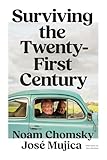The deep and ongoing crises of leading capitalist countries, especially the United States, has provoked a debate over the causes, consequences and appropriate policies to remedy it.
The debate has revealed a deep division over the causes and remedies, with Anglo-Franco American (AFA) politicians, columnists and economists on one side and their Asian-German (AG) counterparts on the other. In general terms the AFA spokespeople put the blame for the crises on external factors, or more specifically they point their finger at the positive trade surpluses, dynamic export sectors and high investment rates in productive sectors and low levels of consumption in the AG countries as the cause of ”unbalances” or “disequilibrium” in the world economy. ((Martin Wolf, “Why China must do more to rebalance its economy” Financial Times, September 23, 2009, p 11. See also Financial Times, October 3, 4, 2009. p 3 and Financial Times, September 21, 2009 p 9.))
In contrast, the AG countries reject this argument which speaks to prejudicial external practices. They emphasize the internal “imbalances” within the AFA countries, which has weakened their international, commercial and financial position.
In this paper, I am going to argue that both internal economic policies and external empire building strategies of the AFA countries have been the driving force for global imbalances. The structural differences between the two regions and the differences in class structure and economic configurations in each bloc precludes any easy or immediate solution. On the contrary, for the foreseeable future, the conflict between dynamic emerging export powers and the declining western bloc is likely to intensify, leading to greater trade conflicts and possible military confrontations.
The AFA charges against China’s commercial ‘imbalances’ conflates trade with the West with Beijing’s relations with the rest of the world. China has balanced trade or even trade deficits with Asian, African, Middle Eastern and Latin American countries. Moreover, the AFA countries have trade imbalances with other regions including the Middle East and Germany. Even if the AFA countries curtailed imports from China, it is most likely that other Asian countries would replace them, including Vietnam, South Korea, Taiwan, Bangladesh and India. The resulting trade deficits of the AFA would remain about the same.
The AFA countries blame China’s “undervalued” currency, and claim that Beijing authorities manipulate the exchange rate to under price exports and beat out competitors (namely producers within the AFA). Yet China’s currency has been revalued steadily upward over 20% the past five years, and yet the AFA still run a deficit, suggesting that their domestic producers have still not been able to compete with Chinese manufacturers. ((Financial Times, October 9, 2009 p 1.)) More recently AFA writers have complained about low interest rates set by the Chinese government as a “subsidy” to its exporters. Yet AFA interest rates are at zero percent or even negative, to no avail. Moreover, the AFA have provided over 1.5 trillion in bailout funds and over 1.3 billion in stimulus spending – a subsidy five times greater than China’s stimulus package, without improving their trade balance. What is telling, given the sectoral allocations, of each regime’s bailout – subsidy – stimulus packages, China has fully recovered and is growing at 8% by mid 2009, while the AFA continue to wallow in negative territory and continue running up trade deficits. This points to the centrality of internal factors, namely, the economic sectors which receive the state subsidies and how they invest it and as a result how their decisions affect trade balances.
The AFA charge that China’s low cost labor, its exploitation of workers accounts for trade imbalances. Yet an increasing percentage of China’s exports are based on technological advances, not cheap labor. This is because low labor cost competitors are emerging in Asia.
The AFA complain that China over emphasizes its ‘export’ strategy at the expense of producing for the domestic market. Yet nearly half of China’s exports to the US are made by US owned multi-nationals who have invested, subcontracted and co-produced with Chinese counterparts. In other words, US internal policy, the deregulation of capital flows, has facilitated the movement of US manufactures abroad resulting in a decline of local production, an increase in imports and greater trade deficits.
Internal Causes of Trade Deficits (and Unbalanced World Economy)
The most obvious and striking correlation with the growth of AFA trade imbalances is the growth and dominance of the financial sector. ((Gerald Davis, Managed by the Markets: How Finance Re-Shaped America (New York: Oxford University Press 2009).)) The financialization of the AFA economies and Wall Street’s CEOs dominant role in the strategic economic positions of the state is transparent to the mass of the people and has even been acknowledged by most private economists and academics. Trade deficits increased in direct proportion to the growing political and economic power of the financial sector. In large part, this was due to the transfer of capital from manufacturing to financial services, leading to the decline of the manufacturing sector’s investments in innovations and competitive management strategies. The financial sector’s, high salaries, bonuses and quick returns attracted most of self-styled “best and the brightest”. MBA graduates multiplied while advanced engineering school graduates diminished. Advanced skilled worker training programs disappeared while low skill retail sales recruitment grew.
The problem was that financial services did not, could not replace the overseas earnings which formerly accrued to the country through manufacturing sales. Least of all in the highly regulated financial markets of China, Japan, India and the rest of Asia, where banking was subordinated to the expansion of manufacturing — namely financing industries targeted by state officials. The dominance of finance capital and the related sectors of real estate and insurance, led to a highly polarized class structure: in which billionaire and millionaire investment bankers presided at the top and an army of low paid service workers (retail employees, cleaners and sweepers, etc.) immigrant and non-union workers occupied the bottom. Presently income inequalities in the US exceed those of any other “advanced” capitalist country. The inequalities in Manhattan exceed those of Guatemala. The growing concentration of wealth is accompanied by decline of median wages over the past three decades. As a result the purchasing power of US workers is declining, thus reducing the demand for locally produced quality goods. The purchase of imported cheap textiles, shoes and other accessories results. The result was a decline in local saving and domestic investment in manufacturing leading to a decline in competitiveness. Moreover, the competition among financial lenders furthered consumer spending and greater individual indebtedness at a time when manufacturing exports were declining, starved of investments.
Most manufacturing firms transformed themselves into financial corporations, channeling investment funds in sectors not earning foreign exchange. Worst of all in pursuit of higher profits, manufacturers turned into commercial vendors, closing down plants and sub-contracting production to China and other Asian countries and importing final products into the US creating the trade imbalances. The large scale relocation of US multi-nationals abroad further exacerbated the trade imbalances.
The key role of the state in creating domestic imbalances leading to global disequilibrium is a result of the financial sector’s takeover of the state,and the deregulation of financial markets. The result was the long term promotion of an economic policy, in which the central bank (the Federal Reserve) and Treasury encouraged the growth of finance ,real estate and insurance sectors over manufacturing. The finance based strategy was justified by a large army of academics and publicists who spoke of a “post industrial”, or “service” or “information” economy as a “higher stage”, rather than a perversely unbalanced, unsustainable and unjust economy.
Financial supremacy coincided with the growing militarization of US foreign policy. Throughout the last thirty years, US overseas economic expansion was gradually eclipsed by the growing reliance on military intervention, and the build-up of military bases in hundreds of sites. As financialization weakened the productive capacity of US manufacturing exporters’ efforts to capture markets, US policymakers increased their reliance on the supremacy of military power. The channeling of billions into military spending drained resources from efforts to upgrade the competitiveness of US civilian industry and was a major factor-in its declining share of export markets. The end result of militarization was a loss of export earnings and the growth of trade deficits.
If we combine the three great internal imbalances in the AFA economics, but especially in the US, the financialization of the economy, the militarization of foreign policy and the concentration of wealth at the top, we can best understand why the US has such a huge and growing trade deficit.
China Export Driven Strategy
China’s emphasis on an export driven strategy and the resultant growing class inequalities is largely a result of the class composition of the state and its social structure. In other words internal factors are the driving force of its pursuit of trade surpluses. What is ironic is that some of the AFA critics, who rightly point to the internal ‘imbalances’ in China, overlook similar problems in the West. Namely, no mention is made of the absence of a national health plan in the US, the growth of inequalities and declining mass purchasing power – even as they point to these deficiencies in China. What Western advocates of greater social welfare in China do not discuss, is the capitalist class power, privilege and profits which hinder greater mass consumption. Least of all do they discuss the motor force for lifting working class and peasant living conditions, namely the class struggle. Instead they rely on technocratic appeals to Chinese elites for greater social spending.
The Chinese state has evolved into a powerful machine for manufacturing goods and billionaires. Today China has the highest growth, the highest rate of exploitation and the greatest class inequalities in Asia. Increasing wages to stimulate local consumption means reducing profits, anathema to all capitalists including Chinese. Increasing public spending on universal health coverage especially for the 700 million uninsured peasants and rural workers means higher taxes on the rich, including the families and colleagues of the governing elite. In contrast, producing for export markets does not require increasing domestic consumer power, on the contrary it requires lower wages.
A shift from an export-driven to a domestic market driven strategy, requires not only a ‘change in policy’ but a deep shift in class power, from the current capitalist class and its state backers to the workers and peasants. To realize large scale, long term commitments of public revenues to social services for the rural poor and higher wages for exploited workers requires sustained popular mobilizations, uprisings, strikes to secure the independent trade unions and peasant associations necessary to secure a shift in state allocations toward domestic consumption.
China’s “imbalances” are largely internal, social and political. An imbalance of social power between an all powerful capitalist state and a repressed powerless mass of workers and peasants; an imbalance in income between a super-rich banking, real estate, manufacturing export elite and a low paid working class and subsistence peasantry;an imbalance between a highly organized state linked by family, ideology and economic interests to the capitalist class and a dispersed, fragmented and isolated mass of working people.
China’s ruling class, its outward billion dollar investments in western capitalist enterprises via its sovereign wealth funds, its billion dollar investments in overseas extractive enterprises, is driven by the mass of capital accumulated that is extracted via intense levels of labor exploitation and the elimination of state funded pensions, health plans and education. China’s role as an emerging imperial power is rooted in the imbalance between global power and social welfare decay.
The fact that western capitalist writers, policymakers and their academic camp followers point to the same social imbalances in China as its domestic working class critics should not obscure a basic point. The Wall Street critics are defending the AFA financial elite against China’s export industrialists’ greater productivity; while the domestic working class critics are criticizing the capitalists and the state for their high rates of exploitation and concentration of wealth.
The key to reducing imbalances in world trade is reducing socio-economic inequalities within each region. The US requires a profound shift from a finance dominated economy to a manufacturing economy, where finance, high tech and higher education is directed to creating a competitive, productive economy based on skilled labor. The link at the top between Wall Street and the Pentagon must be replaced by a link from below between the industrial working class, low paid service workers and public sector employees and professionals.
The structural transformation of the US economy is necessary but not sufficient. If US efforts to pursue a military driven empire persist, this will divert resources away from domestic and overseas economic priorities. Military driven empires alienate trading partners, have high costs and low returns, isolate economic investors and traders from productive partnerships and are destructive of domestic and overseas civilian productive facilities.
The way out of the massive imbalances is for the US to engage in a large scale, long term domestic structural transformations – namely de-financialization and de-militarization. But the political and economic forces benefiting from the current configuration are deeply entrenched, in control of both major parties and dominate the mass media and its message. Yet, despite their profound institutional power they suffer several fatal flaws. In the first instance they have created unsustainable global imbalances, which will sooner or later lead to a collapse of the dollar and renewed and more virulent and costly financial bubbles. Secondly, the free market which is the main ideological prop of the deregulated financial power elite is totally discredited as evidenced by the single digit support and trust of Wall Street. Thirdly, military driven empire building has run its course: after nine years of war in Afghanistan the vast majority of the US public has sent a message to the political elite of both parties, the White House and Congress, that its time to shift from funding failed overseas adventures to solving the problem of 20% under and unemployed Americans (30 million), the 100 million or 33% of Americans with no or costly and inadequate health coverage. No amount of media and political pundit scapegoating of China for our own self-induced “imbalances” can divert American opinion from their direct experiences with our own internal inequalities and policy failures.










